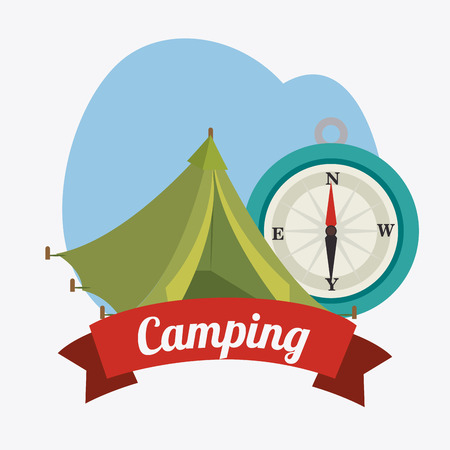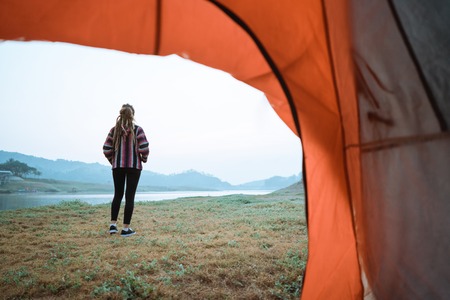1. Introduction: Staying Prepared Whatever the Forecast
When planning an outdoor adventure in the United States, whether it’s a weekend camping trip in the misty forests of the Pacific Northwest or a hiking excursion across the unpredictable Midwest plains, one thing is certain: Mother Nature doesn’t always stick to the forecast. The U.S. is known for its diverse climate zones and rapidly changing weather patterns—from drizzly mornings in Oregon to sudden thunderstorms in Kansas. This unpredictability makes being prepared not just wise, but essential. Efficient packing means more than just stuffing your bag; it’s about anticipating shifts in the weather and ensuring you’re comfortable, safe, and ready for anything that comes your way. By understanding regional weather quirks and learning to pack smartly, you’ll set yourself up for a successful trip—rain or shine.
2. Choosing the Right Clothing Layers
When packing for unpredictable weather, Americans often rely on a tried-and-true layering system to stay comfortable and dry—no matter what Mother Nature throws their way. The key is to use three core layers: a moisture-wicking base layer, an insulating middle layer, and a waterproof outer shell. This approach allows you to adapt quickly as conditions shift from sunny skies to sudden downpours or chilly breezes.
The Three-Layer System Explained
| Layer | Purpose | Popular U.S. Brands/Styles |
|---|---|---|
| Base Layer | Wicks moisture away from skin; keeps you dry and comfortable | Patagonia Capilene, Smartwool Merino, Under Armour HeatGear |
| Insulation Layer | Traps body heat; provides warmth without bulk | The North Face ThermoBall, Columbia fleece, REI Co-op down jackets |
| Waterproof Shell | Blocks wind and rain; protects against the elements | Arcteryx Beta AR, Marmot PreCip, Patagonia Torrentshell |
Why Layering Works for Rapid Weather Changes
The American approach to layering is all about flexibility. By choosing lightweight, packable pieces for each layer, you can easily add or shed clothing as temperatures rise or fall. For example, starting your morning hike in a Smartwool base shirt, adding a Columbia fleece when clouds roll in, then topping it off with a Patagonia Torrentshell jacket if rain threatens keeps you prepared for anything. Many outdoor enthusiasts prefer this modular system because it prevents overheating while staying ready for unexpected showers or cold snaps.
Packing Tips for Layering Success
- Opt for synthetic or merino wool base layers—they dry quickly and won’t hold odor.
- Select compressible insulation like down or synthetic fill for easy packing.
- Choose shells with adjustable hoods and pit zips for ventilation.
- Stick with neutral colors that mix and match effortlessly.
- Remember: cotton kills! Avoid cotton layers, which trap moisture and chill you fast.
The Bottom Line:
Packing the right layers—using trusted American brands—means you’ll always be ready to tackle unpredictable weather while camping across the U.S., from misty Pacific Northwest forests to sun-drenched Southwest deserts.

Packing Smart: Gear for Any Forecast
When it comes to camping in the unpredictable American outdoors, packing smart is all about choosing gear that can handle anything Mother Nature throws your way. Whether you’re heading to the Pacific Northwest or the Smoky Mountains, being prepared for rain or shine will make your trip safer and a whole lot more comfortable. Let’s break down the essentials that seasoned American campers swear by for weatherproof adventures:
Essential Weather-Ready Gear
| Item | Why Its Essential | Pro Tip |
|---|---|---|
| Reliable Rain Jacket | Keeps you dry and warm during sudden showers or storms; look for breathable, waterproof fabrics. | Choose a jacket with adjustable hoods and pit zips for ventilation. |
| Waterproof Boots | Prevents soggy socks and blisters when trails get muddy or streams swell after rainfall. | Opt for boots with good ankle support and quick-drying liners. |
| Pack Cover | Protects your backpack—and everything inside—from getting drenched. | Double-check the size to ensure a snug fit over your fully packed bag. |
| Quick-Drying Clothing | Makes it easier to stay comfortable if you get wet; dries much faster than cotton. | Synthetic blends or merino wool are favorites among U.S. campers. |
| Weatherproof Shelter (Tent/Tarp) | Ensures a dry place to sleep, even in heavy rain or wind. | Add an extra ground tarp or footprint for better protection against groundwater. |
Don’t Forget the Extras!
Apart from these must-haves, many American campers add items like dry bags for electronics, microfiber towels, and layered clothing options to their lists. Layering is key—start with moisture-wicking base layers, add insulating fleece or down, then top it off with a waterproof shell. This approach helps you adapt quickly as conditions change throughout the day.
Packing Like a Pro
The real secret is anticipating what could go wrong with the weather and packing just enough to be prepared—without overloading your backpack. Prioritize multipurpose items and remember that reliable gear makes all the difference when you’re miles from shelter and the skies suddenly open up. With these essentials on hand, you’ll be ready to enjoy your camping adventure—rain or shine.
4. Tech and Tools: Staying Dry and Safe
When camping in the U.S., unpredictable weather can turn a great trip into a soggy mess—or a fun adventure—depending on how prepared you are. Leveraging modern technology and tried-and-true tools is the best way to stay comfortable and safe, whether it’s pouring rain or blazing sunshine. Here’s how you can use American-favorite tech and essential gear to outsmart the elements.
Weather Apps: Your First Line of Defense
Before you even pack your bags, check reliable weather apps widely used across the U.S. These apps offer real-time updates, storm alerts, and forecasts tailored to your exact location. Here’s a comparison of top picks:
| App Name | Main Features | Why Campers Love It |
|---|---|---|
| NOAA Weather Radar Live | Government-sourced radar, severe weather alerts | Trusted accuracy, detailed regional data |
| AccuWeather | Minute-by-minute precipitation forecasts, radar maps | User-friendly interface, hyper-local predictions |
| The Weather Channel App | 10-day forecasts, customizable alerts | Popular nationwide, good for trip planning |
Portable Shelters: Ready for Anything
No matter what the forecast says, having portable shelters is key for staying dry and comfortable. Pop-up canopies, lightweight tarps, and instant tents are easy to set up and provide reliable cover from both rain and sun. Many American campers opt for brands like REI or Coleman because they’re known for durability and fast assembly—crucial when storms roll in unexpectedly.
Essential Camp Tools: Gear Up for Comfort & Safety
Don’t forget the classic camp tools that seasoned U.S. campers always pack:
- Multi-tools: Compact gadgets (like Leatherman or Swiss Army knives) are perfect for quick fixes.
- Headlamps & Lanterns: Battery-powered lights ensure visibility during dark, rainy evenings.
- Ponchos & Rain Jackets: Waterproof outerwear keeps you dry while exploring or setting up camp.
Quick Reference Table: Must-Have Tools for Any Weather
| Item | Main Benefit |
|---|---|
| Weather App (NOAA/AccuWeather) | Up-to-date forecasts and alerts |
| Portable Shelter (Canopy/Tarp) | Shelter from rain or sun in minutes |
| Poncho/Rain Jacket | Personal protection against wet weather |
| Multi-tool | Tackle unexpected repairs easily |
Packing Smart Means Camping Smart
The right combination of technology and traditional tools helps you adapt to whatever Mother Nature throws your way. With these essentials, you’ll be ready to enjoy America’s great outdoors—rain or shine!
5. Food, Fire, and Camp Setup Hacks
When youre camping in the U.S., unpredictable weather can quickly turn a relaxing trip into a soggy scramble. Knowing how to keep your food dry, get a fire going in wet conditions, and efficiently set up camp when it’s raining is essential. Here are some tried-and-true American camping hacks for thriving rain or shine.
Keeping Food Dry: Smart Packing Strategies
Nothing ruins a meal like soggy bread or waterlogged snacks. Use the following tips to keep your food fresh and dry:
| Tip | Description |
|---|---|
| Waterproof Containers | Store food in airtight plastic bins or heavy-duty zip-top bags to prevent leaks and moisture from seeping in. |
| Double Bagging | Place items like bread or tortillas in two layers of bags—especially if you’re expecting heavy rain. |
| Keep Off the Ground | Use picnic tables, rocks, or hang your food bag from a tree branch to avoid ground moisture. |
Starting a Fire in Damp Conditions
A campfire is key for warmth and cooking, but wet wood and rain can make it tough. These hacks will help you get that all-American campfire blazing, even when it’s pouring:
- Bring Fire Starters: Pack waterproof matches, commercial fire starter cubes, or cotton balls soaked in petroleum jelly (store them in a small jar).
- Find Dry Tinder: Check under logs or inside dead trees where wood is likely drier. Peeling off bark can also reveal dry material underneath.
- Create a Platform: Build your fire on a base of thick sticks or a flat rock to keep it off the wet ground and improve airflow.
Efficient Camp Setup When It’s Raining
A quick and dry camp setup keeps spirits high. Experienced campers across America recommend these steps:
- Tarp First Approach: Always set up a large tarp overhead before pitching your tent. Secure it tightly using paracord and trees so you have a dry working area.
- Packing Order Matters: Store your tent at the top of your pack for quick access, and keep stakes/guylines handy so you’re not rummaging in the rain.
- Site Selection: Choose elevated ground away from runoff channels; avoid setting up near rivers or low spots that could flood during storms.
Quick Reference Table: Rainy Day Camp Essentials
| Essential Item | Purpose |
|---|---|
| Tarp & Paracord | Create instant shelter above your campsite or cooking area. |
| Airtight Food Storage | Keeps meals safe from both rain and critters. |
| Fire Starters & Waterproof Matches | Spark a fire even in wet weather conditions. |
Packing smart ensures you’ll enjoy the adventure—rain or shine!
6. Post-Camp Care: Managing Wet Gear
After braving the elements and making the most of your camping adventure, one critical step remains: properly caring for your gear once you get home. American campers know that taking time to clean, dry, and store equipment not only extends its lifespan but also ensures you’re ready for the next trip—rain or shine.
Cleaning Your Gear
Dirt, mud, and moisture can shorten the life of tents, sleeping bags, and other essentials. Start by shaking out debris from tents and tarps. Wash fabric items with mild soap and water; avoid harsh detergents that could break down waterproof coatings. For cookware, a thorough wash with hot soapy water will do the trick.
Tent & Sleeping Bag Cleaning Tips
| Item | How to Clean | Drying Method |
|---|---|---|
| Tent | Sponge with mild soap; rinse well | Air dry in shade, fully open |
| Sleeping Bag | Follow label; gentle cycle if machine washing | Lay flat or hang until completely dry |
| Cookware | Hot soapy water; scrub off residue | Towel dry before storing |
Thorough Drying Is Key
Packing away damp gear is a rookie mistake that can lead to mold, mildew, and unpleasant odors. Unpack everything as soon as you’re home—even if it’s late! Spread out tents, tarps, and sleeping pads in a well-ventilated area or outside on a sunny day. Check seams and corners where moisture often lingers.
Quick Checklist for Drying Gear:
- Hang sleeping bags and clothes separately for air flow
- Open all tent doors and windows while drying
- Use a fan indoors if weather is wet outside
- Don’t forget backpacks—empty pockets and let them air out too!
Smart Storage Solutions
Once everything is bone-dry, store your gear in a cool, dry place. Avoid basements or attics where humidity fluctuates. Use breathable storage sacks for sleeping bags (not tight stuff sacks) to maintain loft. Keep tents loosely folded in large containers or mesh bags rather than compressed in their stuff sacks.
Storage Table for Common Camping Gear:
| Gear Type | Best Storage Method |
|---|---|
| Tent & Rainfly | Loosely folded in mesh bag or bin in closet/garage shelf |
| Sleeping Bag | Larger cotton sack or hung in closet—not compressed tightly |
| Pads & Mats | Flat under bed or standing upright against wall (avoid heavy stacking) |
| Cookware & Utensils | Cleaned & dried; stored together in kitchen bin or tote bag |
| Packs & Daypacks | Unzipped, pockets emptied, hanging on hooks or pegs to air out |
Caring for your gear after each trip not only keeps it performing well but also saves money and hassle down the line—a true American camper’s hack! By following these post-camp care tips, you’ll be prepared for whatever weather comes your way on your next outdoor adventure.


